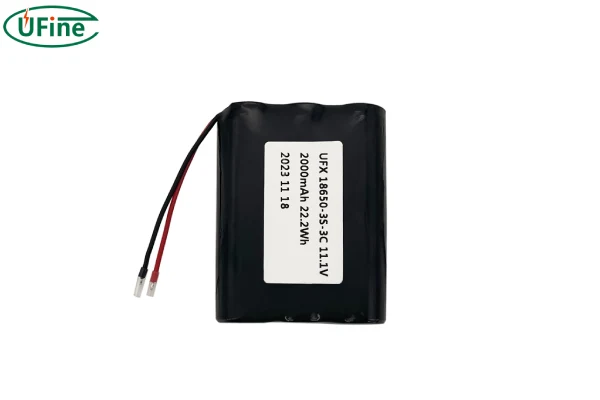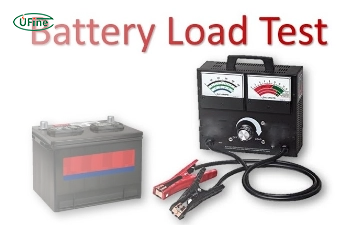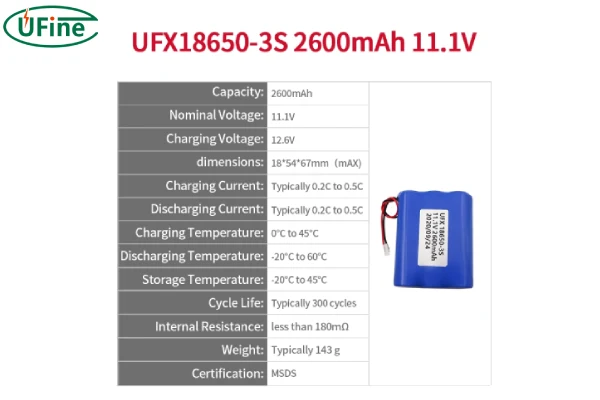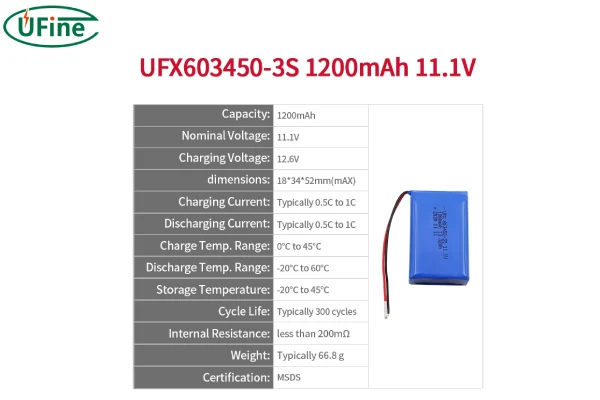
- Part 1. What is a 3S battery?
- Part 2. 3S battery voltage
- Part 3. What voltage to charge a 3s lithium battery?
- Part 4. Various types of 3S battery
- Part 5. 3S battery Charger
- Part 6. 3S 18650 battery
- Part 7. 3S LiPo battery
- Part 8. 3S Li-ion battery
- Part 9. Small 3S LiPo battery
- Part 10. How long does a 3S battery last?
Part 1. What is a 3S battery?

What is a 3S battery? At its core, a 3S battery is a type of battery pack that consists of three individual cells connected in series (hence the “3S” part). This connection method is designed to increase the total voltage of the battery while keeping it relatively compact and lightweight.
These batteries are incredibly popular in a variety of applications, particularly in hobbies and industries where power and efficiency are crucial. For instance, you’ll often find 3S batteries being used in drones, remote-controlled cars, and other high-performance gadgets. The reason for their popularity? They offer a great balance between power output and size, making them versatile and efficient.
Part 2. 3S battery voltage
Now, let’s talk about voltage, which is a critical aspect of any battery. The voltage of a 3S battery is essentially the sum of the voltages of its three cells. To give you a bit more detail, each cell in a lithium polymer (LiPo) or lithium-ion (Li-ion) battery typically has a nominal voltage of 3.7V. When you combine three of these cells in series, you get a nominal voltage of 11.1V (3.7V x 3).
However, that’s not the whole story. When fully charged, each cell can reach up to 4.2V, which means a fully charged 3S battery can have a voltage of around 12.6V. This higher voltage is what gives 3S batteries their oomph, providing the power needed for demanding applications. It’s important to understand these voltages because they affect how your devices perform and how you should handle the batteries.
- Nominal Voltage: 11.1V
- Fully Charged Voltage: 12.6V
- Discharge Cutoff Voltage: 9.0V
Part 3. What voltage to charge a 3s lithium battery?
To charge a 3S lithium battery, the charging voltage should be carefully managed to ensure the safety and longevity of the battery. A 3S lithium battery consists of 3 cells connected in series, each with a nominal voltage of 3.7V. Here’s how the charging works:
Charging Voltage for a 3S Lithium Battery:
-
Nominal Voltage (Voltage when the battery is at 50% charge):
3S lithium batteries have a nominal voltage of 11.1V (3.7V × 3 cells). -
Full Charge Voltage (Maximum charge level):
The fully charged voltage of a 3S lithium battery is 12.6V (4.2V per cell × 3 cells). Charging to this voltage is considered the maximum safe level for most lithium-ion chemistries, including Li-ion, LiFePO4, and LiPo. -
Low Voltage (Discharge limit):
To avoid damaging the battery, it should not be discharged below 9.0V (3.0V per cell × 3 cells). Discharging below this voltage can cause irreversible damage to the battery.
Charging Process:
-
Constant Current Phase (CC):
During the initial charging, the battery is charged with a constant current until the voltage reaches 12.6V. -
Constant Voltage Phase (CV):
Once the voltage reaches 12.6V, the charger switches to a constant voltage mode, where the voltage remains at 12.6V while the current gradually decreases. This ensures the battery is fully charged without overcharging.
Part 4. Various types of 3S battery
A 3S battery refers to a battery pack made up of three cells connected in series. This series connection increases the overall voltage while maintaining the capacity of individual cells. 3S batteries are commonly used in many applications, from electric vehicles to drones, and come in various chemistries. Here’s a breakdown of the most common types of 3S lithium batteries:
1. 3S Li-ion Battery (Lithium Ion)
- Description: One of the most common types of lithium batteries, typically using lithium cobalt oxide (LiCoO2), lithium manganese oxide (LiMn2O4), or other variants.
- Applications: Used in laptops, power tools, e-bikes, electric vehicles (EVs), and energy storage systems.
2. 3S LiFePO4 Battery (Lithium Iron Phosphate)
- Description: Known for its high thermal stability, safety, and long cycle life. LiFePO4 batteries are a safer alternative to other lithium chemistries.
- Applications: Common in renewable energy storage, solar systems, electric vehicles (especially e-bikes and solar-powered vehicles), and backup power systems.
3. 3S LiPo Battery (Lithium Polymer)
- Description: A flexible and lightweight battery often used in high-performance applications. LiPo batteries can have various form factors, and are known for being very lightweight.
- Applications: Drones, RC (remote control) cars, aircraft, portable electronics, and electric skateboards.
4. 3S NCM Battery (Nickel Cobalt Manganese)
- Description: NCM batteries offer a good balance of performance and energy density, combining nickel, cobalt, and manganese. They are widely used in electric vehicles and other high-performance applications.
- Applications: Electric vehicles (EVs), e-bikes, energy storage systems, and power tools.
5. 3S NCA Battery (Nickel Cobalt Aluminum)
- Description: Similar to NCM batteries but with the addition of aluminum, NCA batteries provide excellent energy density and performance.
- Applications: Primarily used in high-performance electric vehicles (such as Tesla cars), energy storage, and other large-scale systems.
6. 3S LCO Battery (Lithium Cobalt Oxide)
- Description: These batteries use lithium cobalt oxide and are known for their high energy density. However, they can be less stable at high temperatures compared to other types.
- Applications: Mobile phones, laptops, tablets, and other portable electronics.
7. 3S LMO Battery (Lithium Manganese Oxide)
- Description: Lithium manganese oxide batteries are popular for their high thermal stability and better safety performance compared to other lithium chemistries.
- Applications: Power tools, electric vehicles, energy storage systems, and medical devices.
8. 3S LFP Battery (Lithium Ferro Phosphate)
- Description: Often confused with LiFePO4, LFP (Lithium Ferro Phosphate) is another name for lithium iron phosphate. It’s highly stable, durable, and safe, especially in high-temperature environments.
- Applications: Typically used in solar applications, energy storage, electric vehicles, and backup power solutions.
Key Differences Between 3S Batteries:
- Capacity: Varies depending on chemistry and application.
- Energy Density: Li-ion and NCM batteries generally offer higher energy densities than LiFePO4 and LMO.
- Safety: LiFePO4 and LMO batteries tend to be safer and more thermally stable, making them preferable in higher-risk applications.
Part 5. 3S battery Charger
The charger – an essential companion to any rechargeable battery. When it comes to charging a 3S battery, you need a charger that can handle the specific voltage and capacity of your battery pack. Not all chargers are created equal, and using the wrong one can be dangerous.
A good 3S battery charger will offer balance charging. This means it charges each of the three cells in the battery pack evenly. Balance charging is crucial because it helps maintain the health of the battery, ensuring that no single cell is overcharged or undercharged. This practice extends the lifespan of the battery and keeps it performing at its best.
When shopping for a charger, look for features like adjustable current settings and safety mechanisms to prevent overcharging. It might sound a bit technical, but these features are there to keep your batteries safe and functional for as long as possible.
Part 6. 3S 18650 battery
Now, let’s talk about a specific type of 3S battery – the 3S 18650 battery. The term “18650” refers to the size of the individual lithium-ion cells used in the battery pack. Each 18650 cell measures 18mm in diameter and 65mm in length. These cells are popular because they offer a good balance of capacity, voltage, and physical size.
A 3S 18650 battery pack combines three of these cells in series, resulting in a powerful and reliable battery. These packs are used in a variety of applications, from high-performance flashlights to electric bikes. The 18650 cells are known for their durability and high energy density, making them a solid choice for demanding tasks.
Part 7. 3S LiPo battery
Next up, we have the 3S LiPo battery. LiPo stands for lithium polymer, and these batteries are quite popular in the world of high-performance applications. A 3S LiPo battery consists of three lithium polymer cells connected in series. These batteries are known for their high discharge rates, which means they can deliver a lot of power very quickly.
One of the key advantages of LiPo batteries is their lightweight design. They’re perfect for applications like drones and RC vehicles, where every gram of weight matters. However, they do require careful handling. LiPo batteries can be sensitive to overcharging and physical damage, so it’s important to use them properly and store them safely.
Part 8. 3S Li-ion battery
While LiPo batteries are great for high performance, 3S Li-ion batteries offer their own set of advantages. A 3S Li-ion battery is made up of three lithium-ion cells connected in series. These batteries are praised for their high energy density and long cycle life, meaning they can be recharged many times without significant loss of capacity.
You’ll often find 3S Li-ion batteries in devices that require a steady and reliable power source, such as laptops, medical equipment, and portable power banks. They might not have the same high discharge rates as LiPo batteries, but they make up for it with their longevity and stability.
Part 9. Small 3S LiPo battery
Sometimes, you need a battery that’s both powerful and compact. That’s where small 3S LiPo batteries come in. These batteries are designed to be lightweight and compact, making them perfect for applications where space and weight are at a premium.
Small 3S LiPo batteries typically have lower mAh ratings compared to their larger counterparts, but they are ideal for mini drones, small RC cars, and other compact devices. Despite their size, they still pack a punch, delivering the power needed for high-performance tasks without weighing down your device.
Part 10. How long does a 3S battery last?
One of the most common questions about 3S batteries is, “How long do they last?” The answer depends on several factors, including the battery’s capacity, how it’s used, and how well it’s maintained.
In terms of lifespan, a well-maintained 3S battery can last several hundred charge cycles. This means you can recharge it many times before it starts to lose capacity. Proper maintenance includes using the right charger, avoiding overcharging and deep discharging, and storing the battery in a safe, cool place.
When it comes to usage time, it varies widely based on the application. For example, a 3S battery in a high-performance drone might last 10-20 minutes per flight, depending on the drone’s power consumption and the battery’s capacity. In a less power-intensive application, such as a portable power bank, the same battery could last much longer.
Related Tags:
More Articles

Battery Load Test: A Comprehensive Guide
Step-by-step battery load test guide for car, solar & industrial use. Learn how to load test a battery, interpret voltage charts, and avoid common mistakes.
The Comprehensive Guide to Battery Balancing and Battery Balancer
Discover how battery balancers improve lithium battery performance, lifespan, and safety. Learn types, functions, and tips to choose the right balancer.
What Is the Best Voltage for a Chainsaw Battery?
Compare 12V-80V chainsaw batteries for light pruning, medium firewood, and professional cutting. See best battery chainsaw with runtime charts and safety tips.
Lithium VS. Alkaline Batteries: A Comprehensive Comparison
Lithium batteries last 3–7× longer than alkaline and perform better in cold weather. Compare lifespan, cost, safety, and best uses to choose the right battery.
Comparing Lithium-Sulfur and Lithium-Ion Batteries: Which is Right for You?
Compare lithium-sulfur (Li-S) and lithium-ion batteries on energy, lifespan, cost, safety, and applications. Best choice for drones, EVs, and electronics.




